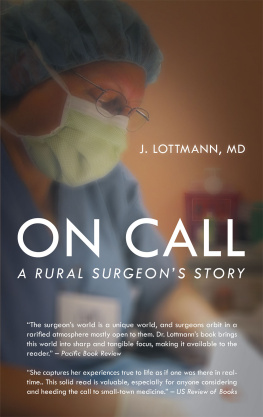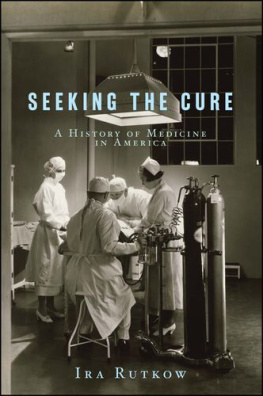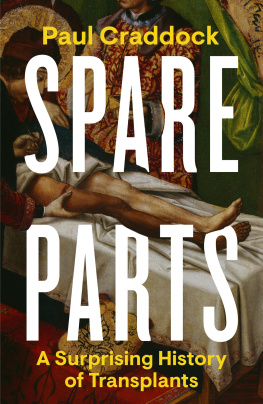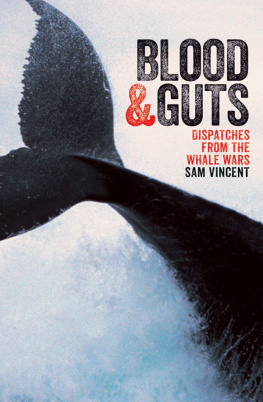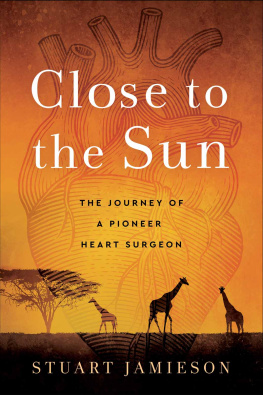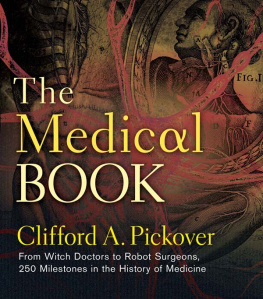BLOOD
AND
GUTS
This eBook is copyright material and must not be copied, reproduced, transferred, distributed, leased, licensed or publicly performed or used in any way except as specifically permitted in writing by the publishers, as allowed under the terms and conditions under which it was purchased or as strictly permitted by applicable copyright law. Any unauthorised distribution or use of this text may be a direct infringement of the author's and publisher's rights and those responsible may be liable in law accordingly.
ISBN 9781407024530
Version 1.0
www.randomhouse.co.uk
Published to accompany the BBC television series Blood and Guts,first broadcast on BBC2 in 2008.
1 3 5 7 9 10 8 6 4 2
First published in 2008 by BBC Books, an imprint of Ebury Publishing.A Random House Group Company.
Copyright Richard Hollingham 2008
Richard Hollingham has asserted his right to be identified as the author of this Workin accordance with the Copyright, Designs and Patents Act 1988.
This electronic book is sold subject to the condition that it shall not by way of trade or otherwise, be lent, resold, hired out, or otherwise circulated without the publisher's prior consent in any form other than that in which it is published and without a similar condition including this condition being imposed on the subsequent purchaser
The Random House Group Limited Reg. No. 954009Addresses for companies within the Random House Group can be found at
www.randomhouse.co.uk
A CIP catalogue record for this book is available from the British Library.
ISBN: 9781407024530
Version 1.0
Commissioning editors: Martin Redfern and Christopher TinkerCopy-editor: Patricia BurgessDesigner: Jonathan Baker at Seagull DesignPicture researcher: Sarah HopperProduction: David Brimble
To buy books from your favourite authors and register for offers, visit
www.rbooks.co.uk
To my mother, Penelope Ann Hollingham,
who would have made an excellent surgeon.
FOREWORD
by Michael Mosley
In the early 1980s I trained to be a doctor at the Royal Free Hospitalin Hampstead, London. I had five wonderful years, made lifelongfriends and met my future wife, Clare. So although I now work intelevision and no longer do any form of hands-on medicine, I havefew regrets about the years I spent poring over books and dissectingcorpses. I did at one point in my training think about becoming asurgeon; after all it was a branch of medicine that was sexy, glamorousand well paid. Then something happened that made me realizethat surgery was probably not for me.
One of the essential manual skills we had to learn early on washow to stitch up wounds. We practised by sewing bits of orange peeltogether and were then let loose on patients. The transition fromuncomplaining oranges to human skin was always going to be achallenge. I remember with some embarrassment my first time. Iwas down in casualty on a Saturday night, a third-year medicalstudent, intensely nervous. The place was crowded with the usualmix of drunks and minor injuries. I was asked to stitch up one of thedrunks, an old tramp with a badly battered face, who had fallen overand gashed his forehead.
I pulled on gloves over my sweating hands and, with the assistanceof a nurse, got together needle and thread and began to sew.I was slow, meticulous and careful. My patient was garrulous,confused and uncooperative. Finally I finished. But as I tried to pullaway my left hand, which I had been using to hold the woundclosed, we both got a nasty shock. I had sewn my glove to his head.I cut the stitches and started again, but I think I realized at thatmoment that I didn't have the manual dexterity, the precision, thesheer attention to detail that marks out the best surgeons.
Since then I have been in many operating theatres and watchedmany surgeons perform their magic. Fifteen years ago a surgeonsaved the life of my son, Jack, and I have met many other peoplewhose lives have been transformed by surgery. All this stimulated myinterest both in surgery and its history, particularly the individualsand their discoveries who got us to where we are today.
The actual decision to make a television series rather than justthink about it emerged from a conversation I had with JaniceHadlow, the dynamic controller of BBC4. I had just completed aseries for BBC4 called Medical Mavericks, a history of medicine toldthrough the stories of self-experimenters. Janice suggested that aseries on surgery would be the next obvious thing to do. We soonagreed that the best approach would be a five-part series coveringfive different areas of surgery, and I went off to decide what exactlythose programmes should contain.
Making television programmes is a collaborative process, andthe end product the result of many different people's thoughts andinsights. After some debate with my production team we decided togo for trauma surgery, cardiac surgery, plastic surgery, transplantsurgery and neurosurgery. Each area illustrates something differentabout how surgery has progressed, and each is packed full of colour-fulcharacters and moral dilemmas.
We also decided that the programmes should not be purelyhistorical but should start with an example of the best of modernsurgery in that particular field. We would then use the modern caseto look back at how the various elements of that particular operationhad come about.
Many of the operations I witnessed while filming were memorable,but the one I found particularly striking was performed bycardiac surgeon Steven Westaby at the John Radcliffe Hospital inOxford. The patient was thirty-four-year-old Sophie Clark.
Sophie had a couple of serious cardiovascular problems, whichshe'd had since birth. The first was a defect in a heart valve, thesecond an aortic aneurysm. An aneurysm is a weakening andswelling of a blood vessel, rather like a faulty tyre. As with a tyre, therisk is that under pressure it will burst. If the problem lies inthe aorta, the main artery of the body, this would almost certainlymean death. The operation to correct both these two defects wasextremely complex.
First Sophie was anaesthetized a development pioneered inthe mid-nineteenth century by William Morton, James Simpson andothers (see Chapter 1).
Then she was connected to a heart-lung machine, the first ofwhich was built and tested by John Gibbon in 1953 (see Chapter 2).
Next her heart was stopped, using potassium chloride, a chemicalmore commonly used for making fertilizer.
Then her body was cooled from a normal body temperature of37C to a decidedly chilly 16C. This was to slow her metabolism andcut her brain's oxygen demands during the operation. It's anapproach that was first suggested by Bill Bigelow, who was in turninspired by research he had been doing into the hibernating habitsof groundhogs (see Chapter 2).
Finally, all her blood was drained. As Steve put it, 'Heart surgeonsare basically plumbers. You have to get the blood out the way just asyou have to switch off the water before you change the pipes.'
At this point Sophie looked like something from the morgue.She was chilly to the touch, grey in the face, had no heartbeat, andthe EEG technician could detect no signs of brain activity. She wasas close to death as anyone I have ever seen.
Steve, under some pressure to get the operation done in asshort a time as possible, did a magnificent job correcting her problems.He replaced her faulty heart valve with an artificial one,repositioned and reattached blood vessels using techniques firstdeveloped by Alexis Carrel (see Chapter 3), then warmed her up,started her heart, sewed her back up and the operation was done.She has since made a full recovery.
GOING FIRST
Not all surgery ends quite so happily. The thing about pioneeringsurgery is that it can, and often does, go wrong. The price of goingfirst is that it is often those who come later who benefit from thelessons learnt. The history of surgery is littered with stories ofpatients who died while undergoing experimental procedures. Inmany cases, the sort of procedures attempted would not pass amodern ethical committee.


